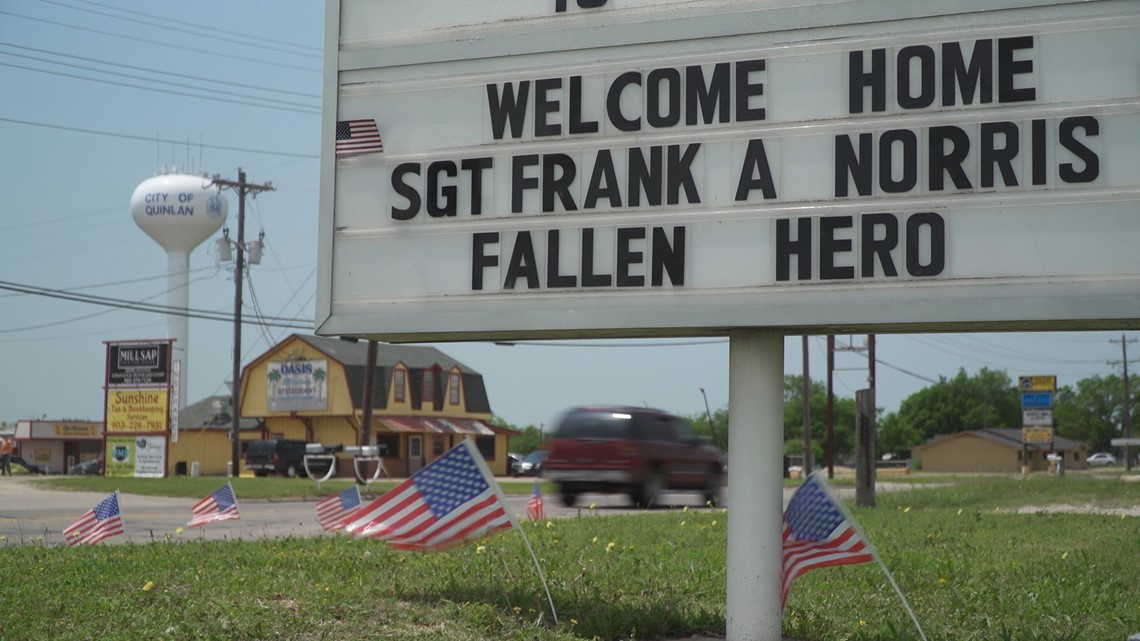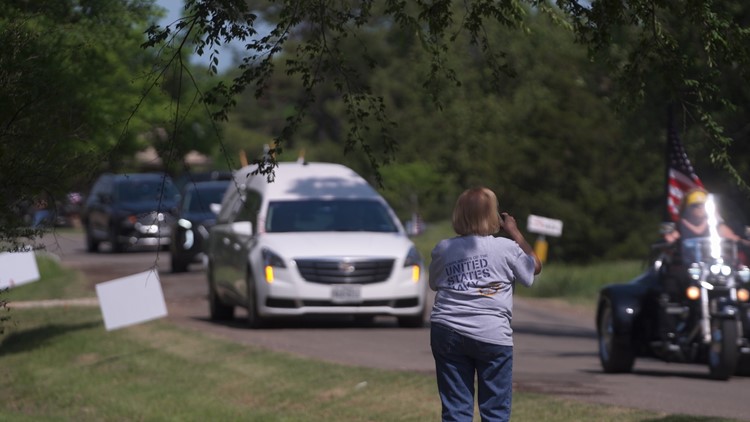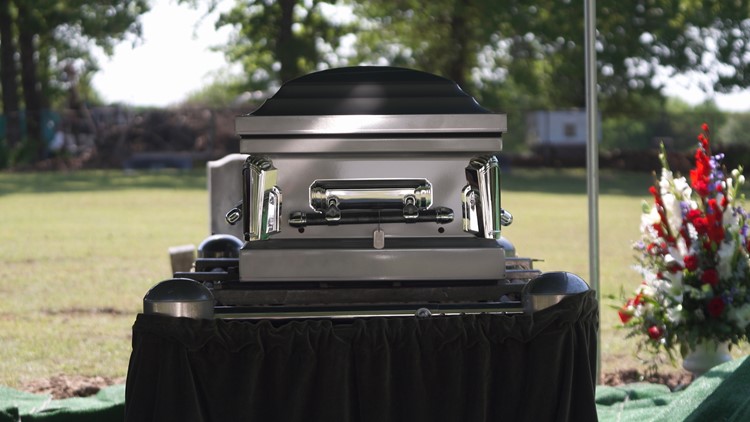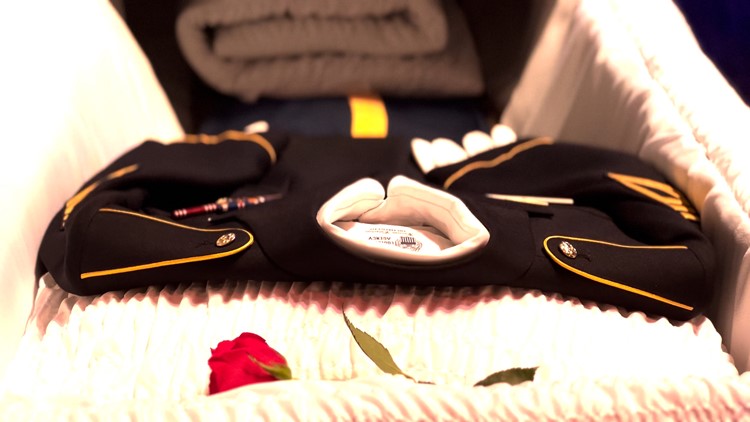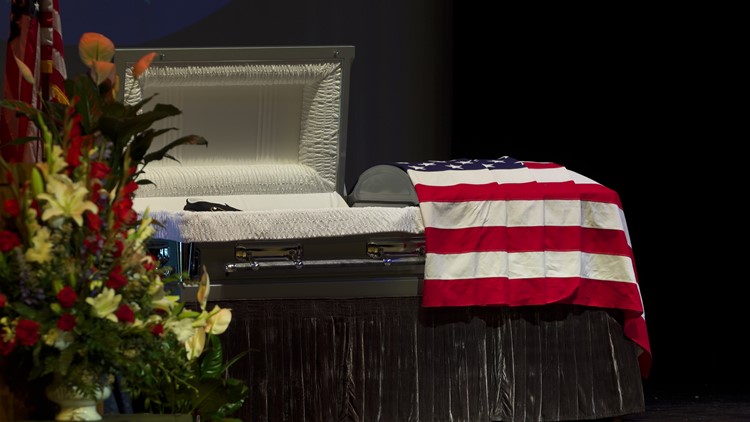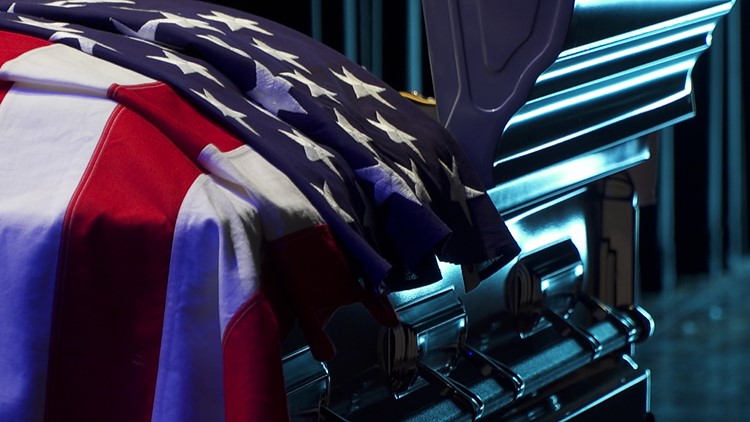QUINLAN, Texas — Steve Norris arrived at Dallas-Fort Worth International Airport a few weeks ago to welcome his uncle -- an uncle he’s always known but never met.
“It was the first time we’d been in the same place at the same time,” Norris said. “And it was an opportunity and a moment that you never thought it was going to happen.”
His uncle, Frank Ardith Norris, grew up on a cotton farm in Quinlan during the Great Depression before joining the Army Air Corps and going off to Europe to fight in World War II.
Ardith, as he preferred to be called, was a 23-year-old flight engineer on a B-24 bomber named Old Baldy. On Aug. 1, 1943, Old Baldy was part of a strategic bombing mission by the United States called Operation Tidal Wave.
That day, 178 bombers were sent to Romania in attempt to destroy oil refineries near the city of Ploiesti. Hitler and the Nazis controlled Romania at the time, and Ploiesti was one of the Axis powers top oil suppliers.
However, the German Army was ready for the attack.
Now known as Black Sunday, Operation Tidal Wave remains the second-deadliest air raid in American history.
Only 88 aircraft returned to base in Libya. At least 300 American airmen were killed or missing.
Ardith was one of them.

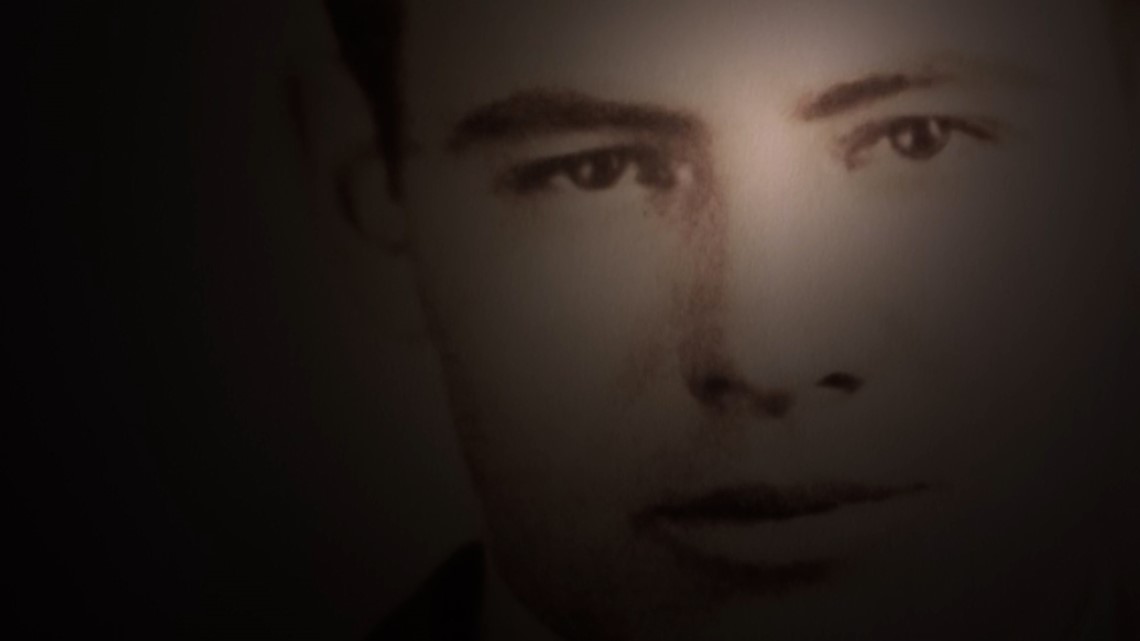
His nephew Steve said, even in death, his uncle and the crew of Old Baldy were heroes.
“The pilot was still alive enough to control the airplane and crashed into the six-man crew of the German anti-aircraft gun and they killed the guys that killed them,” Steve Norris said.
For his service, Ardith was awarded the Distinguished Flying Cross with Bronze Oak Leaf Cluster, a Purple Heart, the Air Medal with Silver Oak Leaf Cluster, the Greek War Cross with Bronze Crown and the European African Middle Eastern Campaign Medal with Four Stars.
Steve Norris, his sister Nancy Norris Gaddis, and their family members still alive today never met Ardith. He died before any of them were born, but they grew up knowing all about him.
“It was important to our grandparents that his memory stay with us,” Gaddis said.
Said Steve Norris: "It gave us a real sense of who he was."
The family loved to talk about Ardith, and one thing they discussed more than anything was finding him.
After Old Baldy was shot down, the remains of Ardith and many other airmen, were never found.
All his family had was a plaque with Ardith’s name that rested in the cemetery where he would have been buried next to his parents.
79 years later, a World War II hero is returned to Texas
They spent decades hoping he’d be found, but Ardith’s mom, dad, brother and sisters all died never knowing.
“We had no idea where in Romania he crashed and died and so we had no idea where his remains might be,” Norris said.
Today, there are still roughly 40,000 American servicemembers, from all wars, missing or unaccounted for.
Despite the odds, the Army goes to great lengths to find its lost servicemembers.
“The Army never gave up, they haven’t given up,” Gaddis said.
In 2015, the Army believed it might have a lead on Ardith’s location. Just in case, they asked Steve Norris for a DNA sample, which set him on a mission to learn even more about his uncle.
Norris spent countless hours researching Operation Tidal Wave and his uncle’s service.
He learned that after Ardith’s plane went down, monks from a local monastery moved the remains of the crew to a cemetery about a mile away from the crash site.
However, at some point, the remains were moved to a cemetery in Belgium.
The Army was aware of that when they called Norris for that DNA sample in 2015.
Officials spent a few years gathering more information and making their case in order to exhume the grave in Belgium.
“It was early 2021 when they called us and said, 'We found him,’” Norris said.
Seventy-nine years after leaving for war, Technical Sgt. Frank Ardith Norris came home.
He arrived on an American Airlines flight at DFW Airport.
Norris was overcome with emotion as he touched Ardith’s flag-draped casket.
“Closure has been very important to all of us,” Norris said. “And we feel that sense of closure for his brothers and sisters and his parents and his grandparents.”

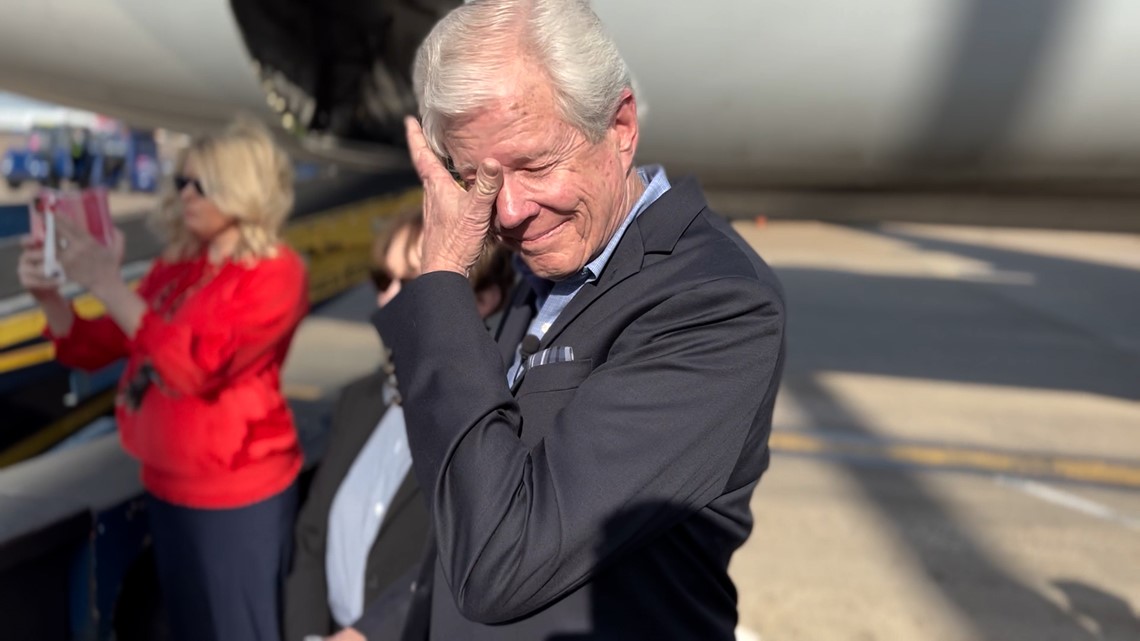
“And we are grateful, not only to the Army, but to the nation for bringing him home,” Gaddis said.
Grateful residents lined the roads, waving flags as Ardith was escorted back home to Quinlan. A service was held in the high school auditorium, because there wasn’t a church in town big enough.
“I felt all the emotions that I think my grandmother and my grandfather and my father would feel in that moment,” Norris said. “And it was a little overwhelming. It was very special.”
After the service at the high school, Ardith was buried with full military honors in a small cemetery, in a plot next to his parents.
Just steps from the gravesite a metal rod was fused between two growing trees. A sign hung, explaining that the metal rod is what’s left from a seesaw that sat on the school playground, a seesaw Ardith once played on as a child.
As Ardith was finally laid to rest, tears filled Steve Norris' eyes. Finally, after eight decades, his family had closure. And he finally had a chance to tell his uncle what he’d always wanted to.
“That I loved him without knowing him," Steve Norris said. "That I’m glad he was here. For all of us.”
And that’s the best part: Knowing that he is finally here.
To read Ardith’s obituary and more about his military service, click here.

